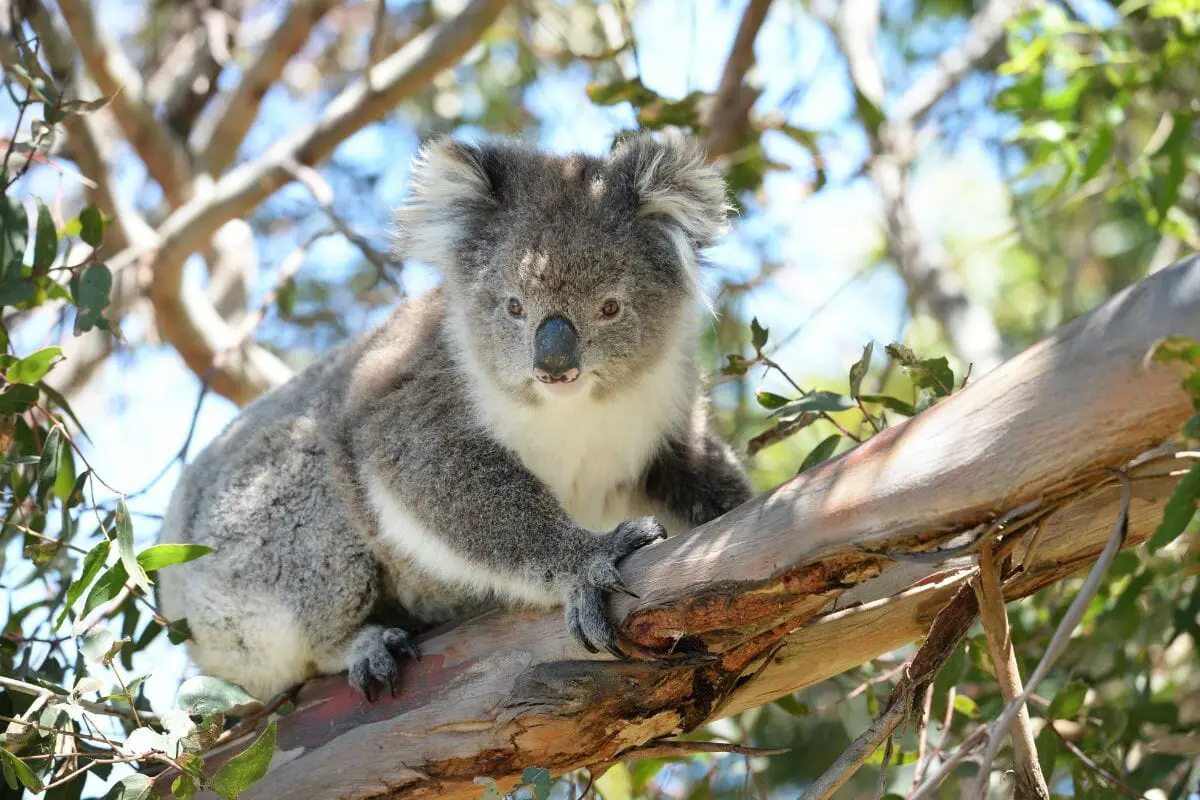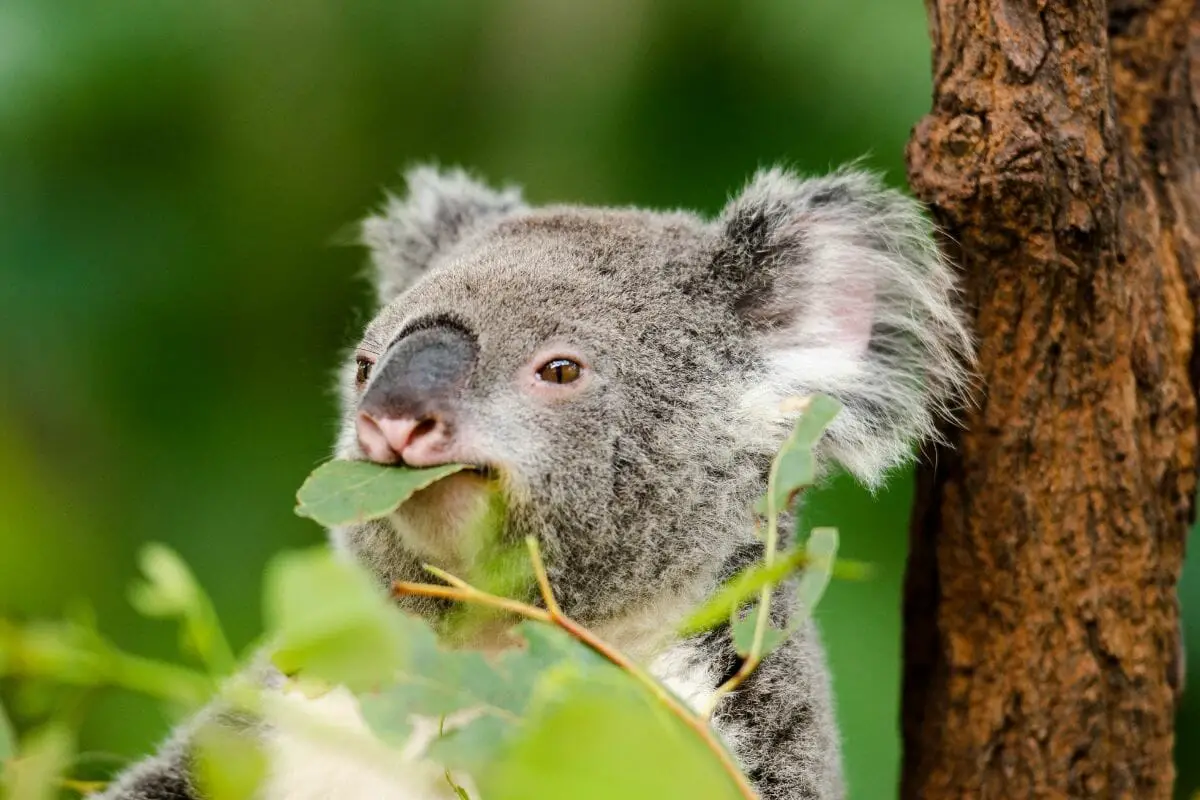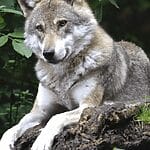Marsupials are a type of mammal that inhabit Oceania and the Americas. They’re very unique animals and cover a large number of different species.

They’re known for carrying their young in their pouches, but this is only one of many interesting facts about marsupials.
These beautiful and fascinating animals have so much to teach us, but what do you know about them? Do you know how big and small they can be? Or how many species of marsupials there are?
In this article, we will look at 10 fun facts about marsupials. Many of these facts may surprise you!
Let’s get started!
1. The Location of Marsupials
Although Marsupials are most closely associated with Australia, they are found in several other countries around the world.
In fact, they’re located across several countries in Oceania and the Americas.
Australia is home to around 235 different species whereas the Americas have roughly 100 species.
The most diverse marsupials are found in Australia, so it’s no surprise that the animals have become synonymous with the country.
2. The Largest And the Smallest
Marsupials can vary greatly in size, height, and weight.
The smallest marsupial is the long-tailed planigale. This tiny nocturnal animal looks a little like a mouse, only it has a longer snout and is a marsupial instead of a rodent.
Usually, they reach a length of only 2 to 2.3 inches and weigh just over four grams. They can be found in northern Australia, where they live in grasslands and floodplains.
In comparison, the largest marsupial is the red kangaroo. These look like typical kangaroos but are the largest of the species and have rusty red fur.
The males can grow to be around twice the size of the females and can hit lengths of over five feet long! They can also manage weights of up to 200 pounds.
3. The Strongest Mammalian Jaws Belonged to a Marsupial
Nowadays, the strongest mammalian jaws belong to dangerous animals such as lions and hippos.
Modern-day kangaroos and koalas can’t hope to compete with the ferocious strength of these animals’ bites and jaws.
However, the strongest bite of any mammal that ever excited is thought to belong to a long-extinct marsupial.
This is the thylacoleo carnifex, a marsupial lion that roamed Australia more than 40,000 years ago. The strength of their bite is especially impressive when compared to the size of the animal.
Pound for pound, the bite of the thylacoleo carnifex was the most impressive of any mammal!
4. Marsupial Placentas Don’t Last For Long
Marsupial pregnancies and births are very unique compared to many other species of animals. Marsupials do not develop a placenta in the same way that other animals do.
Placental mammals (which include animals such as cats, whales, rabbits, and even humans) have a placenta in their uterus which supports the baby as it grows and develops inside its mother.
The placenta feeds the baby via the umbilical cord throughout the entire pregnancy until it is time for the baby to be born.
When born, the baby has fully formed thanks to the nutrients and growth it received from the placenta.
However, marsupials have a very different type of placenta. It only lasts for a very short time and nourishes the baby for only literally a few days.
5. Marsupial Babies Are Born Early

The short life of the placentas is a large part of the reason why marsupial pregnancies are very, very short. Marsupial babies(see also: What Are Marsupial Babies Called? They’re Incredibly Cute) are born very early in their development and are not fully formed.
They can be as small as a jelly bean and are still in a practically embryonic state. Their features, such as their eyes, ears, and rear limbs, are not fully developed when they’re born.
After marsupial babies are born, they have to climb up their mother’s body so that they can find refuge and safety in the mother’s pouch.
6. Marsupial Females Have Pouches
As we stated in the last point, marsupial babies are born early in their development and after their birth, they climb into their mother’s pouches. Once in the pouch, they continue to grow and develop until they become fully formed.
The mother’s nipples are located in the pouch so the baby can safely feed from within.
When marsupial babies are born, many of their features aren’t fully developed but they do have all of the features they need to nurse, such as their mouth, nostrils, and forelimbs.
Pouches can differ greatly from species to species. For example, a kangaroo’s pouch opens horizontally on the front of its body whereas the pouch of a Tasmanian devil opens to the rear.
Some species, such as kangaroos and wallabies, continue to allow their young (called joeys) to live in the pouch even after they’re capable of leaving it.
7. Some Marsupials Can Carry Multiple Babies
Some species can carry more than one joey in their pouch. They can have joeys of different ages in there comfortably and will be able to nurse them both.
Kangaroo mothers produce different types of milk as the joey develops and their nipples have evolved so that they can supply different types of milk from different nipples, ensuring that both the older and younger joey each get the nutrients they need.
8. Not All Marsupials Have Pouches
Although it’s commonly thought that all marsupials have pouches, this isn’t the case. Even though the word ‘marsupial’ comes from ‘marsupium,’ the Latin for pouch, there are some marsupials without pouches.
For example, the short-tailed opossum doesn’t have a pouch at all. Pouches typically serve the purpose of protecting joeys as they feed, however, the short-tailed opossum instead can retract their nipples into the body when not in use.
9. The Original Marsupials
Modern-day marsupials can be traced back to the final days of the
dinosaurs. The early ancestors of today’s marsupials originated (see also: Origin And Evolution Of Marsupials (Very Interesting Read))in South America and as they had less competition and predators, their species varied more greatly than they do today.
There were even saber-toothed marsupials and dangerous marsupials that were like bears!
During this time, South America was still connected to Antarctica and Australia.
As the continents separated, some species remained with Australia and others in South America and Antarctica.
It’s thought that the majority of modern-day marsupials may all be descendants of the same original species.
This species would have populated Australia, South America, and Antarctica when they were still conjoined.
10. Marsupials Eat Different Things

Marsupial diets can vary from species to species. They can largely be separated into three groups.
Dasyurids
These are carnivorous marsupials that eat meat. They include species such as the Tasmanian devil, quolls, and numbats.
Peramelemorphs
These are omnivorous marsupials that eat meat and vegetation. They include species such as bandicoots and bilbies(see also: Bandicoots And Bilbies – What’s The Difference?).
Diprotodonts
These are the marsupials that are mainly herbivorous and eat vegetation. They include kangaroos, koalas, wombats, and possums.
Final Thoughts
In this article, we listed 10 quick facts about marsupials. We looked at their size, location, diets, and how their young develop.
There are so many fascinating and surprising facts to learn about marsupials(see also: Are Echidnas Marsupials? (The Answers Might Surprise You)) and we barely scratched the surface in this article!
Want to learn even more about marsupials and their differences compared to other animals? View the differences between a marsupial kangaroo and a rabbit.









